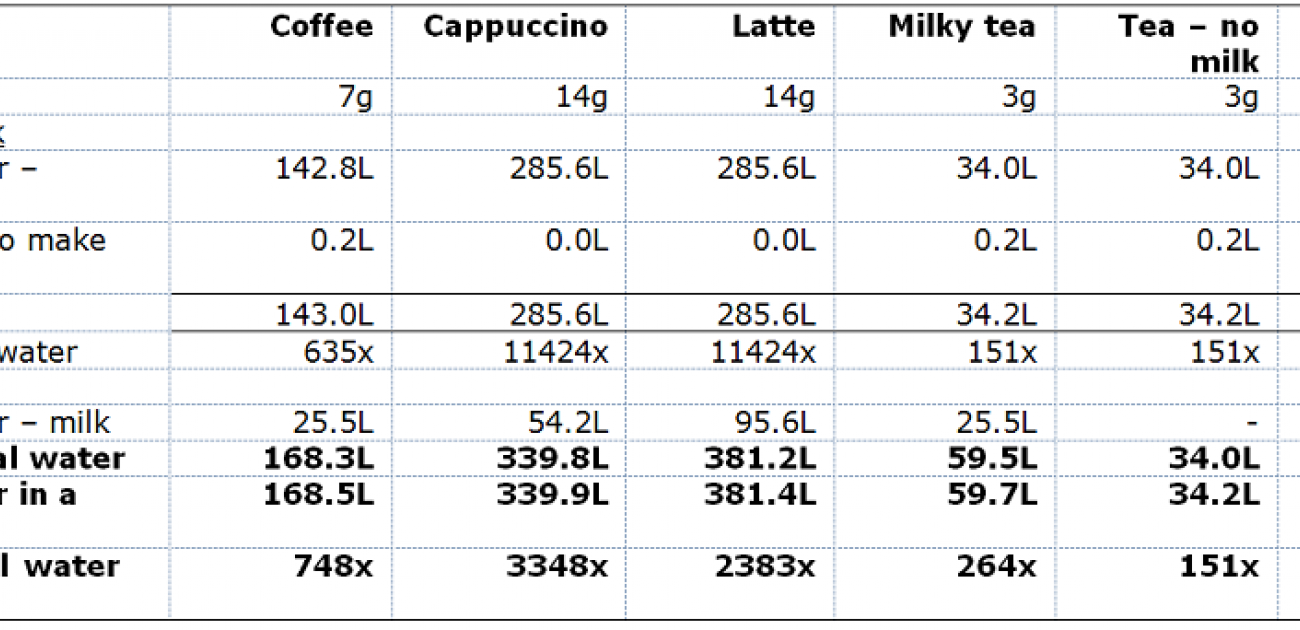25 March 2015
How much water is needed for a mug of coffee or tea?

The simple answer is not much – about 225ml.
But look deeper and we need to consider the rainwater needed to grow the coffee beans and tea leaves, plus the water used to process these and make any packaging.
Over the last few years, we have been looking at the environmental costs within Steenbergs products. We have looked at our carbon footprint, possible pollution from cleaning chemicals and our recycling rates.
Our main finding has been that over the lifecycle of Steenbergs’ products the biggest environmental burden by far is the virtual water (i) to grow Steenbergs’ herbs, spices and teas and which is then transferred when these move from India or Sri Lanka to the UK.
In money terms, the environmental costs of water usage are 2½ times larger than our carbon footprint. It’s about 138 million litres, roughly 55 Olympic swimming pools.
Furthermore, this virtual water dwarfs the actual water used to make a mug of coffee or tea – the 225ml we glibly used for our initial answer.
The virtual water in a mug of coffee or tea is 635 times and 151 times the actual water used to make your drink.
So 143 litres of virtual water are needed to grow your morning coffee, but only 0.2 litre of water is needed to make it. In contrast, the virtual water for tea is 34 litres, one quarter of the water consumed in a coffee.
If you include the virtual water in milk, this bumps up the figures to a hefty 169 litres of water needed for a mug of coffee and 60 litres for a mug of tea.
For a hot chocolate, it’s even higher. 415 litres of water, mainly rainwater, are needed for each hot chocolate. That’s a whopping 2048 times more water than your mug holds.
For cappuccinos and lattes, more coffee is used in making the espresso and quite a lot of milk is then added. This ups the virtual water content to 340 litres for a cappuccino and 381 litres of your latte.
So next time you have a drink, pause for a moment to think about the massive amounts of rainwater that were needed for your small cuppa.
 Breakdown of total water in hot beverages
Breakdown of total water in hot beverages
Notes:
(i) Virtual water is “the volume of water that is required to produce the product.”
(ii) Water footprint calculations:

(iii) In our calculations, we have drawn heavily on the pioneering work of Chapagain and Hoekstra of the University of Twente (Netherlands):
Chapagain, A.K., Hoekstra, A.Y. (2004) Water footprints of nations, Volume 2: appendices, UNESCO-IHE Institute for Water Education, Research Report Series No. 16, November 2004
Chapagain, A.K., Hoekstra, A.Y. (2007) The water footprint of coffee and tea consumption in the Netherlands, Ecological Economics, 66: 109-118
Jefferies, D., Muñoz, I., Hodges, J., King, V. J., Aldaya, M., Ercin, A. E., Milà i Canals, L., Hoekstra, A. Y. (2012) Water footprint and life cycle assessment as approaches to asses potential impacts of products on water consumption. Key learning points from pilot studies on tea and margarine, Journal of Cleaner Production, 33: 155-166




